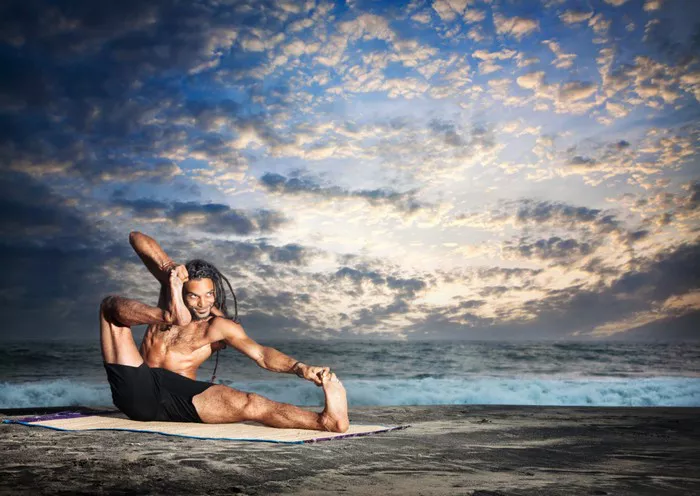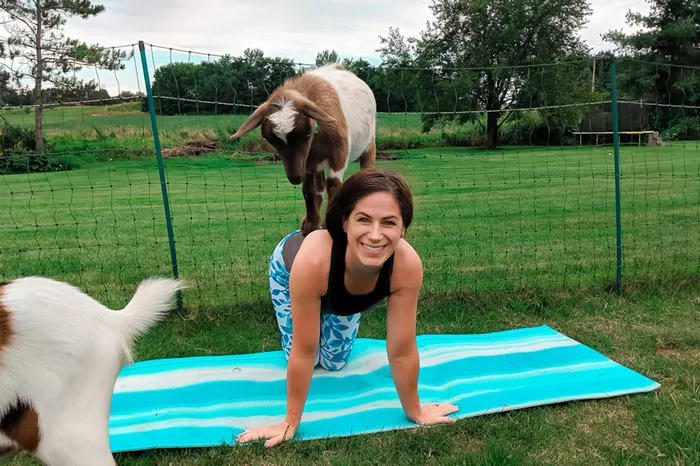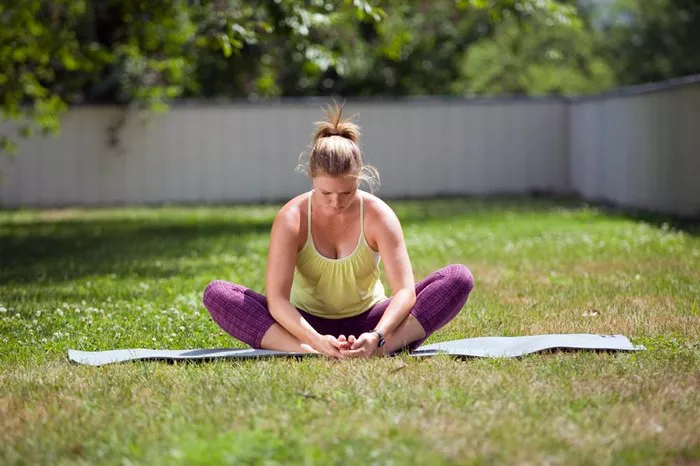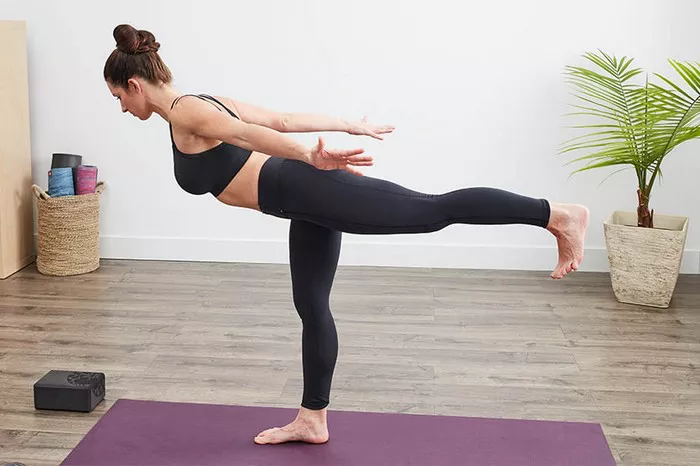Yoga is a profound practice that integrates physical postures, breath control, meditation, and ethical principles to create balance and harmony within the body and mind. Over the centuries, various styles and poses have emerged, each offering unique benefits for the practitioner. One such pose, which has gained increasing attention in the modern yoga community, is Chandrasana, often referred to as “Full Moon Pose” in English.
This pose is inspired by the grace and energy of the moon, symbolizing calmness, fluidity, and serenity. In this article, we will explore what Full Moon Pose is, its history, the physical and mental benefits it offers, how to practice it correctly, and the variations that cater to different levels of yoga practitioners.
The Origin of Full Moon Pose
Chandrasana is derived from two Sanskrit words: Chandra, meaning “moon,” and Asana, meaning “pose” or “posture.” The moon has been a symbol of tranquility, balance, and feminine energy in various cultures and spiritual traditions. In yoga, the moon represents the cooling, calming, and restorative energies, which can counterbalance the heat and intensity associated with the sun (symbolized by the pose Surya Namaskar or Sun Salutation).
The practice of yoga poses inspired by celestial bodies is not uncommon. The Surya Namaskar (Sun Salutation) connects the practitioner to the power and vitality of the sun, while poses like Chandrasana help to tap into the gentle and restorative qualities of the moon.
The Symbolism of the Moon in Yoga
The moon, in yogic philosophy, represents the mind’s reflective and receptive aspects. While the sun is linked to the active, outward energy and vitality (the “masculine” energy), the moon is associated with the calming, reflective, and inward qualities (the “feminine” energy). Practicing poses like Full Moon Pose can help to invoke a sense of emotional balance, inner peace, and alignment with the natural rhythms of the world.
In the broader context of yoga, this pose is thought to align and balance the body’s energies, particularly during the full moon phase, when energy is thought to be at its peak. The full moon is considered a powerful time to set intentions, reflect on personal growth, and release that which no longer serves you. Full Moon Pose can be seen as a physical practice that channels this energetic flow, facilitating emotional release and physical relaxation.
The Benefits of Full Moon Pose Yoga
Chandrasana is a pose that offers a range of physical and mental benefits, helping practitioners enhance flexibility, strength, and overall body awareness. Below are some of the key benefits associated with this pose:
1. Improved Flexibility
One of the most immediate benefits of Full Moon Pose is an increase in flexibility, especially in the hips, spine, and side body. The lateral stretch in this pose helps to open the intercostal muscles between the ribs, which improves breathing and mobility in the chest and ribcage. The deep stretch through the hamstrings, calves, and glutes can also release tension in the lower body, improving overall flexibility.
2. Core Strength
While Full Moon Pose focuses on flexibility, it also demands stability and strength from the core. The need to maintain balance while extending the legs and arms forces the practitioner to engage the abdominal muscles. This engagement of the core strengthens the muscles of the abdomen, lower back, and obliques, contributing to improved posture and functional strength.
3. Enhanced Balance and Coordination
In Full Moon Pose, the practitioner is required to maintain a stable foundation while balancing on one leg. This challenges both physical and mental focus, and regular practice can lead to improved coordination and overall body awareness. The act of extending the arms and legs in opposite directions also helps develop coordination between different parts of the body.
4. Stress Relief and Calmness
Just as the moon symbolizes calm and reflection, Full Moon Pose has a deeply soothing effect on the mind and body. The slow and controlled movements in the pose promote relaxation, reduce anxiety, and relieve stress. Practitioners often report feeling a sense of inner peace and tranquility after holding the pose, helping to quiet the mind and release emotional tension.
5. Improved Posture
By elongating the spine and opening the chest, Full Moon Pose encourages better posture. The practice of maintaining an upright position with a long spine helps to counteract the effects of slouching and poor posture, particularly for individuals who spend long hours sitting at a desk or working on a computer.
6. Stimulates the Digestive System
The stretching of the side body and torso can stimulate the digestive organs, improving circulation and the elimination process. This can help in relieving bloating, constipation, and other digestive discomforts. Additionally, the pose may improve the flow of prana (life energy) throughout the body, further enhancing digestive health.
How to Practice Full Moon Pose
Full Moon Pose is a relatively simple yet elegant asana that can be performed with a few key instructions. Below is a step-by-step guide on how to practice this pose.
Step-by-Step Instructions for Full Moon Pose
Start in Mountain Pose (Tadasana):
- Begin by standing tall with your feet together, arms at your sides, and body in a straight line.
- Take a few deep breaths, grounding yourself into the mat and setting an intention for your practice.
Step into a Wide Legged Stance:
- From Mountain Pose, step your feet wide apart—about 3-4 feet (depending on your body).
- Point your toes forward and engage your legs by lifting your kneecaps and pressing down through your feet.
Lift Your Arms:
- Inhale deeply as you extend your arms overhead, keeping them parallel to the floor.
- Your palms should be facing each other with fingers stretched wide.
Shift Your Weight onto One Leg:
- As you exhale, begin to transfer your weight to one leg (let’s say the right leg). Make sure the foot is firmly rooted into the floor.
- Begin lifting the opposite leg (the left leg) as you tilt your torso toward the right, creating a deep side bend.
Extend Your Body in Both Directions:
- As you reach for the floor with your right hand, extend your left arm upward, keeping both arms in one straight line.
- If possible, place your right hand on the floor or a block, keeping your body open, with your chest facing toward the ceiling.
Engage the Core:
- Engage your core to maintain stability and balance while keeping your body extended in two directions.
- Press your left foot actively into the ground and keep your right leg straight while stretching the side body.
Hold the Pose:
- Hold the position for several breaths (typically 5-10 breaths). Focus on maintaining a smooth and steady breath.
- Keep your gaze upward or towards the floor, depending on what feels more comfortable.
Return to Standing:
- To exit the pose, slowly bring your left arm down and return to a standing position, bringing your legs together and lifting your arms overhead.
- Repeat the pose on the other side.
Variations and Modifications
While Full Moon Pose is accessible for most practitioners, there are variations and modifications that can make the pose easier or more challenging, depending on the level of flexibility and strength.
1. Using Props for Support
If you find it difficult to reach the floor with your hand, use a yoga block or a sturdy object beneath your hand. This will help support your body and prevent any strain in the lower back or shoulders. A block can also be used to elevate the lifted leg if balance is challenging.
2. Bend the Knees
If you find it hard to keep the extended leg straight, it’s okay to bend the knee slightly. This is particularly helpful for beginners or those with tight hamstrings. Focus more on the stretch through the side body rather than achieving a perfectly straight leg.
3. Deepening the Pose
For advanced practitioners, you can deepen the Full Moon Pose by reaching the top arm behind your head, allowing for a deeper stretch through the chest and shoulders. You can also work on holding the pose for longer periods, focusing on breath control and deeper engagement of the core.
Conclusion
Full Moon Pose, or Chandrasana, is a beautiful asana that not only offers physical benefits such as improved flexibility, balance, and strength but also fosters a sense of inner calm, emotional release, and mental clarity. The practice of this pose invites us to connect with the lunar energy and experience a deeper connection to our inner selves. By incorporating Full Moon Pose into your yoga practice, you can begin to tap into the natural rhythms of the body and mind, promoting a sense of peace and alignment with the world around you.
Whether you’re a beginner or an experienced yogi, Full Moon Pose can be modified to suit your individual needs and abilities. It offers a unique opportunity to explore the physical body while cultivating a sense of inner peace, just as the moon illuminates the night sky with its calm and gentle glow.
Related Topics:
























